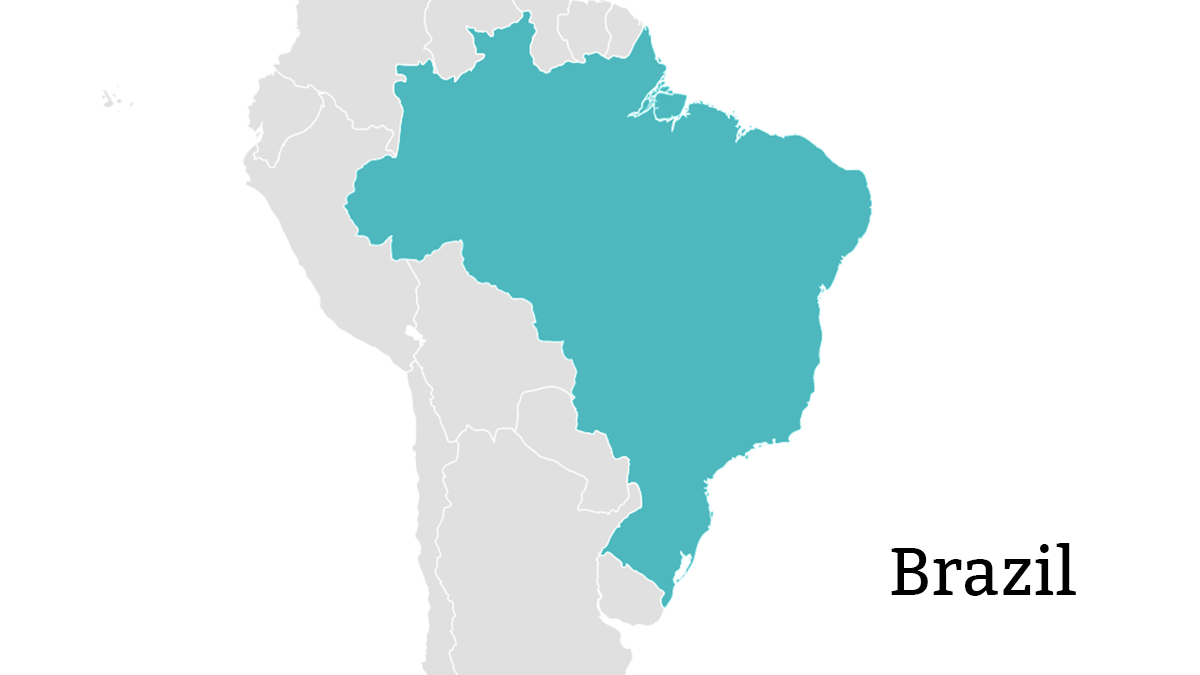
Winning the opportunity to host the World Cup and the Olympics in the same decade was a significant boost to Brazil during a period when it was one of the world’s fastest growing economies. However, this success drew attention to the fact that its telecommunications infrastructure needed development in order to support the hosting of two major events that demanded network coverage right across the country.
In 2011, Brazil had an estimated 260 million+ mobile connections, with mobile penetration approaching 140%. However, much of the population, particularly those living in rural areas, remained unconnected. While the country’s National Broadband Plan (PNBL) included a target to extend coverage to all municipalities by 2015, stakeholders faced a variety of challenges to deliver services and network coverage outside of major cities and towns as the fifth largest country in the world and with a geographically diverse terrain.
To date, the National Telecommunications Agency (Anatel), the country’s regulator, has prioritized market competition to expand connectivity, improve the quality of service provision, and drive down prices. By 2012, mobile virtual network operators (MVNOs) had entered the market alongside mobile operators, encouraging network rollouts in rural areas to stimulate new customer acquisition and help stem the pace of the decline in average revenue generated per user.
Nonetheless, developing mobile services outside of major cities remains a costly undertaking, and incentives were needed to encourage firms to invest in areas that were not otherwise commercially viable. As the mobile market leader in Latin America, the action that Brazil took was undoubtedly bound to have an impact on other markets in the region.
In 2012, Anatel considered the use of spectrum allocation to realize the goals outlined in the national broadband plan. International standards suggested that allocating the 700MHz band to mobile services could produce a digital dividend which could be used to deploy mobile services more broadly and efficiently, resulting in lower prices across rural Brazil.
Anatel took two key steps to promote the country’s digital inclusion goals:
First, Anatel held a spectrum auction, promoting the development of 4G services throughout the country. To incentivize private sector interest, the licenses included coverage obligations that also designated locations where mobile network operators could exclusively operate their services. However, the licenses also included a timetable for MNOs to extend coverage to all municipalities within the boundaries of the spectrum license, including rural areas. This arrangement expanded network coverage while also temporarily giving MNOs an opportunity to develop a customer base with favorable competition conditions.
Second, Anatel created a regulatory environment that made infrastructure sharing possible. Regulators in Brazil hold the view that because spectrum is a limited resource, by encouraging infrastructure sharing, competition can be promoted while at the same time lowering investment costs for operators in less profitable areas, which in turn lowers prices.
A year after the spectrum license auction, the four largest mobile operators in Brazil entered into agreements to share a Radio Access Network (RAN). Claro partnered with Vivo, and TIM partnered with Oi. These arrangements enabled coverage in parts of the country where there were populations of 30,000 people or less. Claro and Vivo each deployed 93 cell sites that they were then each responsible for operating, according to the terms of their license. Also in 2013, Oi and TIM made a 15-year RAN agreement to build LTE networks in 12 major cities.
Both of these agreements were reviewed and approved by Anatel and Brazil’s competition authority, the Administrative Council for Economic Defense (CADE).
By 2014, Brazil added 15 million mobile subscriptions and the TIM/Oi network sharing agreement, which had grown to cover 45 cities in one year, was extended to the 2500MHz band with the aim to reach 88 additional locations a year later. In 2016, Anatel approved the next phase of the Claro/Vivo infrastructure sharing agreement, enabling the operators to increase the number of cell sites they jointly deployed in rural areas to a total of 412. By 2018, at least 5.6 million new people in rural areas were connected as a result of the Claro/Vivo partnership.
Anatel, alongside CADE, successfully applied competition law to realize the government’s digital inclusion agenda. Moreover, they helped develop a regulatory environment where infrastructure sharing became an increasingly common way for mobile operators to compete to connect new areas of Brazil without the need for substantial financial investments.
Suggested Citation: Alliance for Affordable Internet (2019). “Brazil: Sharing infrastructure to expand rural coverage.” Good Practices Database. Washington DC: Web Foundation.
